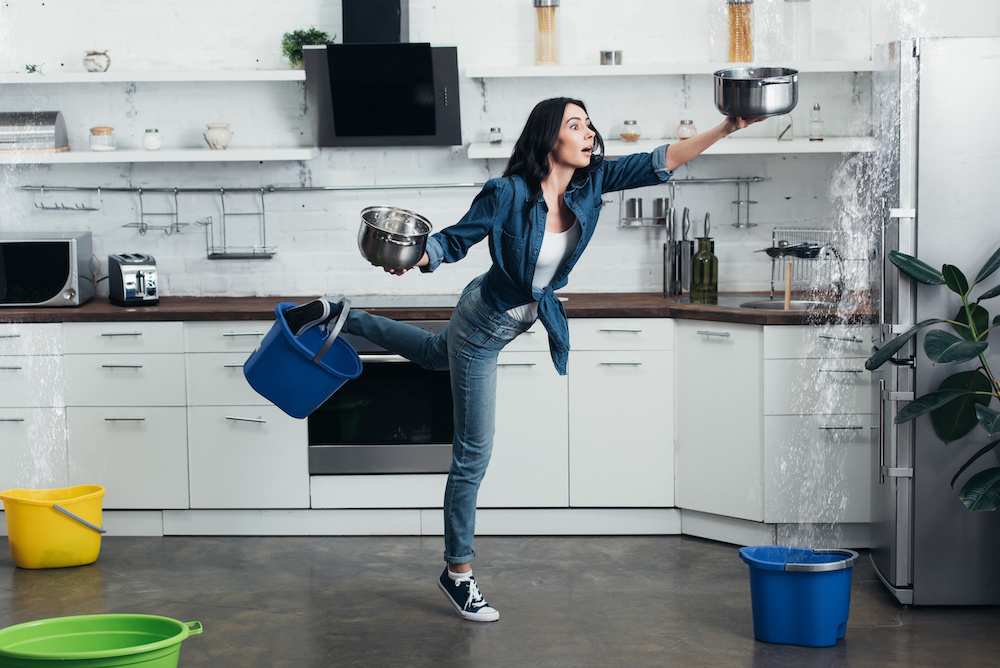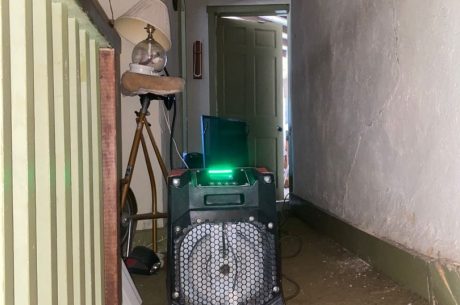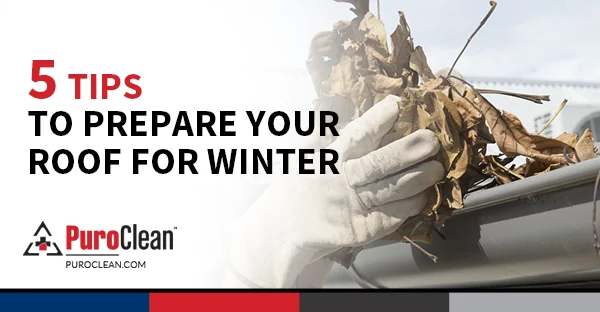Table of Contents
Discover essential Home Water Damage Prevention Tips in our comprehensive guide. Learn how to maintain your roof, protect your plumbing, safeguard your basement, and prepare for emergencies to avoid costly repairs and mold growth.
Water damage is one of the most common and costly issues homeowners face. Even a small amount of water can lead to significant problems, including structural damage, mold growth, and expensive repairs. Whether it’s from a leaky roof, a burst pipe, or a malfunctioning appliance, water intrusion can wreak havoc on your home.
Fortunately, with proper maintenance and proactive measures, you can protect your property from water damage. This comprehensive guide provides over 2,000 words of actionable tips to help you safeguard your home.
1. Understanding the Risks of Water Damage | Home Water Damage Prevention Tips
Water damage can occur in various ways, and understanding the risks is the first step toward prevention. Common causes of water damage include:
- Roof Leaks: Damaged or missing shingles, clogged gutters, and ice dams can allow water to seep into your home.
- Plumbing Issues: Burst pipes, leaky faucets, and faulty water heaters are frequent culprits.
- Basement Flooding: Poor drainage, foundation cracks, and sewer backups can lead to water accumulation in basements.
- Appliance Failures: Washing machines, dishwashers, and refrigerators with water lines can leak or overflow.
- Natural Disasters: Heavy rainfall, snowmelt, and flooding can overwhelm your home’s defenses.
By identifying these risks, you can take targeted steps to mitigate them.
2. Maintaining Your Roof and Gutters | Home Water Damage Prevention Tips
Your roof and gutters are your home’s first line of defense against water damage. Proper maintenance is essential to ensure they function effectively.
2.1 Clean Gutters and Downspouts
- Why It’s Important: Clogged gutters can cause water to overflow, leading to foundation damage, roof leaks, and basement flooding.
- What to Do: Clean your gutters at least twice a year (spring and fall) and after major storms. Remove leaves, sticks, and debris.
- Pro Tip: Install gutter guards to minimize debris buildup and reduce the frequency of cleaning.
2.2 Inspect and Repair Gutters
- Why It’s Important: Damaged gutters can’t effectively channel water away from your home.
- What to Do: Check for cracks, sagging, or loose connections. Repair or replace damaged sections promptly.
2.3 Extend Downspouts
- Why It’s Important: Downspouts that discharge water too close to your foundation can cause basement flooding.
- What to Do: Ensure downspouts extend at least 10 feet away from your home. Use splash blocks or downspout extensions to direct water flow.
2.4 Inspect Your Roof
- Why It’s Important: A damaged roof can allow water to seep into your home.
- What to Do: Inspect your roof annually for cracked or missing shingles, deteriorated flashing, and pooling water. Hire a professional roofer for repairs if needed.
3. Preventing Ice Dams and Roof Damage | Home Water Damage Prevention Tips
Ice dams are a common winter problem that can lead to significant water damage. Here’s how to prevent them:
3.1 Insulate Your Attic
- Why It’s Important: Poor insulation allows warm air to escape, melting snow on the roof, which refreezes and forms ice dams.
- What to Do: Ensure your attic is properly insulated to maintain a consistent temperature.
3.2 Ventilate the Attic
- Why It’s Important: Proper ventilation keeps the roof cool and prevents ice dams.
- What to Do: Install vents near the eaves and roof peak to allow warm air to escape and cold air to enter.
3.3 Remove Snow from Your Roof
- Why It’s Important: Heavy snow accumulation can lead to ice dams and roof collapse.
- What to Do: Use a roof rake to remove snow when it reaches about 6 inches deep. Avoid using a ladder to prevent accidents.
3.4 Install a Water Membrane
- Why It’s Important: A waterproof membrane under the shingles provides an extra layer of protection against water seepage.
- What to Do: Hire a professional to install a water membrane during roof repairs or replacement.
4. Protecting Your Plumbing System | Home Water Damage Prevention Tips
Plumbing issues are a leading cause of water damage. Follow these tips to keep your pipes in good condition:
4.1 Insulate Pipes
- Why It’s Important: Exposed pipes in unheated areas (e.g., basements, garages, attics) are prone to freezing and bursting.
- What to Do: Wrap pipes in foam rubber or fiberglass sleeves to insulate them.
4.2 Let Faucets Drip
- Why It’s Important: Running water is less likely to freeze.
- What to Do: During freezing temperatures, allow a small trickle of water to flow through exposed pipes.
4.3 Seal Cracks and Openings
- Why It’s Important: Cold air can enter through cracks and freeze pipes.
- What to Do: Use caulk to seal cracks in walls and foundations near water pipes.
4.4 Maintain Consistent Temperatures
- Why It’s Important: Sudden temperature drops can cause pipes to freeze.
- What to Do: Keep your thermostat at the same temperature day and night.
5. Safeguarding Your Basement |Home Water Damage Prevention Tips
Basements are particularly vulnerable to water damage. Here’s how to protect yours:
5.1 Test Your Sump Pump
- Why It’s Important: A sump pump removes water from your basement, preventing flooding.
- What to Do: Test your sump pump regularly and ensure it has a battery backup in case of power outages.
5.2 Install Backflow Valves
- Why It’s Important: Backflow valves prevent sewage from backing up into your home.
- What to Do: Install valves on basement drains, sinks, and toilets.
5.3 Seal Basement Walls and Floors
- Why It’s Important: Cracks in walls and floors can allow water to seep in.
- What to Do: Use waterproof sealant to fill cracks and gaps.
5.4 Clear Snow Away from Foundations
- Why It’s Important: Melting snow can seep into your basement.
- What to Do: Shovel snow at least 3 feet away from your home’s foundation.
6. Preventing Appliance Leaks | Home Water Damage Prevention Tips
Household appliances can also cause water damage if not properly maintained.
6.1 Inspect Washing Machine Hoses
- Why It’s Important: Worn or damaged hoses can burst and flood your home.
- What to Do: Check hoses for cracks or bulges and replace them every 5 years.
6.2 Maintain Your Water Heater
- Why It’s Important: A leaking water heater can cause significant damage.
- What to Do: Inspect your water heater annually for signs of rust or leaks. Replace it every 10–15 years.
6.3 Check Dishwasher Connections
- Why It’s Important: Loose or damaged connections can lead to leaks.
- What to Do: Inspect the dishwasher’s water supply line and ensure it’s securely connected.
7. Landscaping and Drainage Tips | Home Water Damage Prevention Tips
Proper landscaping and drainage can prevent water from pooling near your home.
7.1 Slope the Ground Away from Your Home
- Why It’s Important: Proper grading directs water away from your foundation.
- What to Do: Ensure the ground slopes at least 6 inches over a 10-foot span away from your home.
7.2 Clear Sewer Grates
- Why It’s Important: Blocked grates can cause water to pool and flood your property.
- What to Do: Remove snow and debris from sewer grates regularly.
8. Emergency Preparedness | Home Water Damage Prevention Tips
Despite your best efforts, water damage can still occur. Be prepared to act quickly.
8.1 Know Your Water Shut-Off Valve
- Why It’s Important: Turning off the water supply can minimize damage during a leak.
- What to Do: Locate your main water shut-off valve and ensure everyone in your household knows how to use it.
8.2 Have a Plan for Vacations
- Why It’s Important: Leaks can go unnoticed when you’re away.
- What to Do: Shut off the main water supply and ask a trusted neighbor to check your home regularly.
Conclusion
Protecting your home from water damage requires a combination of regular maintenance, proactive measures, and emergency preparedness. By following the tips outlined in this guide, you can significantly reduce the risk of water damage and ensure your home remains safe and dry. Remember, prevention is always better than cure, and investing time and effort now can save you from costly repairs in the future.
Protect Your Investment & Restore Your Peace of Mind
Don’t let water damage and potential mold growth overwhelm you. Contact PuroClean of Lansdale today at (267) 834-5900 for a free consultation. We’ll be there to guide you through the restoration process and ensure your property is restored quickly, safely, and efficiently.




 PuroClean of Lansdale
PuroClean of Lansdale